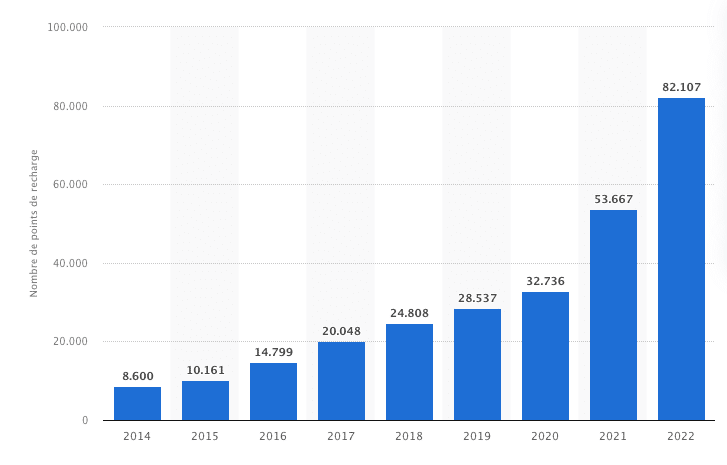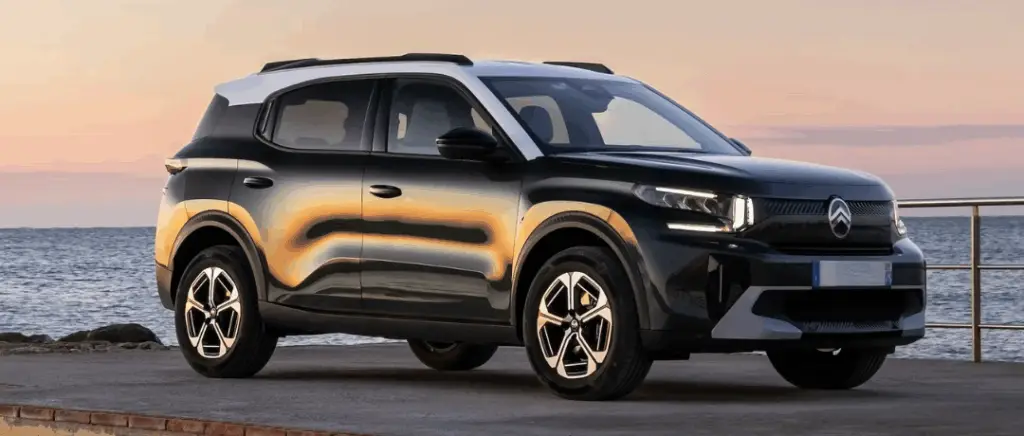Monday to Friday
9am - 12.30pm - 2pm - 7pm
The spectacular development of the electric car over time
The evolution of the electric car over the years has been marked by significant advances in terms ofautonomy. The range of an electric vehicle is one of the most important criteria for drivers. Manufacturers have made some tempting promises in this area.
Electric cars: when did they start?
A quick historical point, contrary to popular belief, the first electric cars date back to the end of the 19ᵉ century. By this time, several engineers had already imagined electricity as a reliable solution for powering a vehicle. In 1870, Robert Anderson, a Scottish scientist, developed a vehicle powered by a non-rechargeable battery. They were a great success, especially in big cities, and their silence and absence of polluting emissions contributed to their popularity. In 1899, an electric car called "La Jamais Contente" has even exceeded 100 km/honce again demonstrating its incredible performance for its time.
However, they had limitations, their autonomy was around 50 km, which made them less practical than an equivalent internal combustion car. This was because the batteries used at the time were mainly lead-acid, heavy and not very efficient. What's more, they took a long time to recharge, and there was no network of recharging stations as they are today. Finally, despite strong enthusiasm for electric cars at the time, technological and economic challenges put a stop to their development. It was not until the end of the 20ᵉ century that engineers took the project in hand again, no doubt thanks to growing environmental concerns and better knowledge on the subject.
The 2010s: an era of upheaval for the electric car
The 2010s marked a major step forward in the development of electric cars and their battery. With the advent of lithium ion technology, range has improved significantly. It is no longer unusual to see vehicles that can travel between 150 and 300 km on a single charge, such as the Nissan Leaf. The average range has improved over the years:
|
2015
|
211 km
|
|
2016
|
233 km
|
|
2017
|
267 km
|
|
2018
|
304 km
|
|
2019
|
336 km
|
|
2020
|
338 km
|
Source : International Energy Agency
Despite a higher purchase price than a combustion engine car, thanks to lower battery production costs, electric vehicles are becoming increasingly affordable. In addition, government incentives such as the environmental bonus and the conversion premiummaking electric cars even more attractive and accessible.
To take the example of the first clean model of NissanWith a launch price in Europe of around €30,000 in 2010, €26,000 in 2015 and €24,000 in 2020, this is a reduction of more than €5,000. That's a reduction of more than €5,000, while offering even greater range and improved performance and technical specifications.
What's more, l'recharging infrastructure has developed, making electric cars more practical for everyday use. Recharging speeds have also improved, with some models able to be fully recharged in less than an hour. The network of recharging stations Tesla Supercharger introduced in 2012 can even be topped up in just 15 minutes.

Number of recharging points open to the public in France between 2014 and 2022
Source : Statista
Electric cars in 2010: great ambitions, little choice
Finally, the 2010s have also seen a greater diversity of electric cars available on the French, European and global markets. Whereas in 2010, only Nissan, Tesla and Mitsubishi were marketing these models, at the dawn of 2020, most of the major manufacturers such as Volkswagen, BMW and Mercedes are offering all-electric cars to the general public. An embarrassment of choice for drivers, which explains the growing popularity of this market.
What's more, different vehicle ranges are emerging. While the first electric models were mostly electric city cars designed for urban use, other categories of vehicle are now emerging, such as the :
- Electric SUVs Their imposing size and long range mean that they can sometimes be driven for days without recharging,
- electric saloons They generally have a longer range, and their elegant silhouette combines comfort, space and performance,
- electric compacts Halfway between a city car and a saloon, it is designed to offer the ideal compromise between interior space and manoeuvrability,
- electric vans They are aimed at a more professional audience and are practical for transporting goods or equipment.
Drivers with big budgets are also well catered for. Year after year, more and more manufacturers are marketing very top-of-the-range luxury vehicles that easily exceed €100,000.
More robust models are sold exclusively in certain regions. This is particularly true of pick-ups sold exclusively in the United States. The electric car market has therefore adapted very well to the needs of road users, and today everyone can find the electric car that suits their needs and budget.
Mercedes EQS SUV 450 4MATIC

Purchase price 150 150 €
(list price excluding bonuses)
Leasing with no deposit for professionals from €0/month
- Range (WLTP): 673 km
- Acceleration (0 to 100 km/h): 6.1 sec
- Fast charge (from 20 to 80 %): 32 min
Tesla Model S Dual Motor

Purchase price 109 990 €
(list price excluding bonuses)
Leasing with no deposit for professionals from €0/month
- Range (WLTP): 634 km
- Acceleration (0 to 100 km/h): 3.2 sec
- Fast charge (from 20 to 80 %): 30 min
Discover the electric cars available from Beev
Green mobility: what is the current situation?
As the transition to green mobility gathers pace, it's vital to understand where we stand in the electric car landscape. Technological innovation and growing demand from drivers are shaking up this constantly evolving market.
Electric batteries: an overview of existing technologies
Today, most electric cars use lithium-ion technology. These batteries offer greater energy density, which translates into greater range. Lithium-ion batteries have made their mark on the electric car sector, but although they are less widespread, some electric cars are still made using other core components such as lead or zinc. nickel.
| Avantages | Inconvénients | |
|---|---|---|
|
Lithium-ion battery
|
Its long autonomy means it can optimise its energy when not in use.
|
Very expensive to produce, it is sensitive to temperature variations.
|
|
Lithium iron prosphate battery
|
As well as overheating less, it lasts longer than other batteries.
|
Costly to produce, its energy density is lower than that of lithium batteries.
|
|
Solid electrolyte battery
|
With little risk of leaks or overheating, it has a high energy density.
|
It is not very well developed, because the technology is still too little known.
|
|
Nickel-metal hydride battery
|
Cheaper than all other batteries, its technology is well known and has been used for a long time.
|
Its energy density is lower than lithium batteries, which shortens its lifespan.
|
Also read → How long does an electric car battery last?
Electric battery autonomy: how far can we really go today?
The growth in the sale of electric cars has seen the emergence of a number of flagship models that have made their mark on the market through their performance, design and, above all, their range. Here are some examples of today's electric vehicles with remarkable range.
BMW I4

La BMW i4 uses an electric motor at the rear with 340 bhp, and its generous, large 84 kWh battery enables it to cover a very wide range of distances. a distance of 590 km on a single charge!
Volkswagen ID.3

This electric family hatchback stands out for its attractive price, high level of comfort and convincing range in real-life conditions. In particular, the 'Pure' variant of the ID.3 offers an impressive range of 350 km thanks to a 77 kWh battery.
Hyundai Ioniq 6

L'Hyundai Ioniq I6 offers excellent autonomy on a single charge. It stands out for its low energy consumption, similar to models such as the Mercedes EQS or EQE. Equipped with a 77.4 kWh battery and rear-wheel drive, this electric car boasts a superb range of 610 km.
Car manufacturers are well aware that range is now a key criterion in a buyer's purchasing decision. So it's hardly surprising that technologies will evolve rapidly in the future, and that electric cars will have ever greater range.
The future of battery autonomy
Specialists are constantly exploring new ways of developing much stronger batteries that promise even greater autonomy and a longer life.
The new platform made in Stellantis
Stellantis has unveiled new flexible platforms for electric vehicles. They offer a long range (up to 700 km!) combined with a flexibility that will enable the carmaker to produce a wide variety of vehicles.
From 2023, 14 brands (including Citroën, Opel, Fiat or Jeep) will be marketing electric cars equipped with these chassis. It's a real revolution, given that most of today's clean cars are built on the same platform as their internal combustion counterparts.
The Stellantis brands plan to produce up to 2 million vehicles a year based on these platforms, with a variety of body styles, including passenger cars, crossovers and SUVs.
The designers have therefore come up with four platforms dedicated to this specific engine:
- Small: reserved for small city cars like the Peugeot e-208 or the Fiat 500eIt promises a range of at least 500 km.
- Medium: dedicated to electric saloon cars, it will extend their range to 800 km.
- Large: this platform will be dedicated to electric SUVs, with a claimed range of 500 km.
- Frame: the fourth platform will be entirely reserved for electric commercial vehicles.
An electric battery: what innovations are on the horizon?
Research is underway to develop solid batteries. In addition, advances in supercapacitors (ultrafast batteries that store and release energy very quickly) could revolutionise the way we recharge our vehicles, making the process much faster.
The future of electric car range is promising. A number of innovations are being developed to further improve battery capacity. These include :
- Solid-state batteries: unlike current lithium-ion batteries, which use a liquid electrolyte, solid-state batteries use a solid electrolyte. This could offer higher energy density, faster charging and a longer lifespan.
- Lithium-air technology: this could offer up to ten times the capacity of current lithium-ion batteries. However, challenges such as durability and stability have yet to be overcome.
- Improvements in supercapacitors: these can be charged and discharged very quickly, but traditionally have a lower capacity than batteries. Research is underway to increase their capacity while maintaining their charging speed.
Conclusion
The autonomy of electric cars has come a long way since its inception. With advances in technology and falling costs, it's clear that the future of motoring is electric. For those considering investing in an electric vehicle, the time has never been better. Ready to take the plunge? Contact our Beev experts if you have any questions. We'll get back to you within the hour.
































